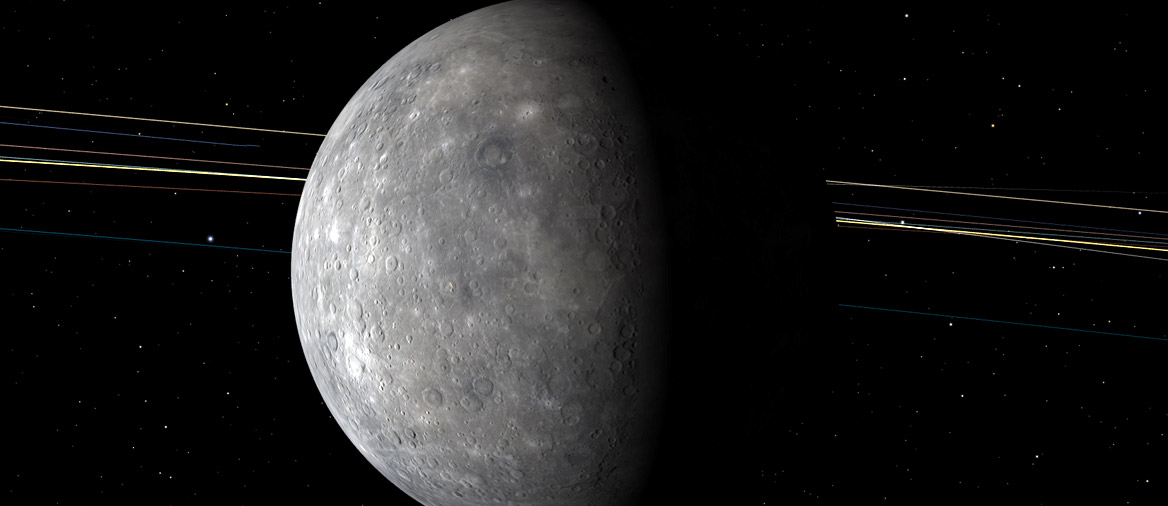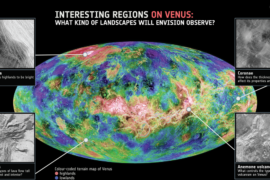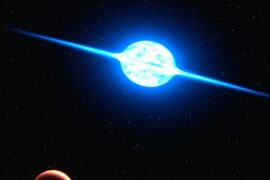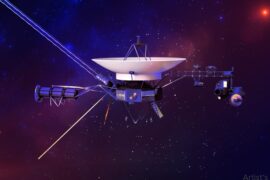In this article, we’ll take a look at the characteristics that make Mercury such a unique planet in the Solar system.
But first, here are some quick facts about it. As you might already know, it is the closest planet to the Sun, but how close is it really?
| Average distance to the Sun | 57,909,227 km (35,983,125 miles) |
| Length of year | 88 days |
| Planet type | Terrestrial |
| Position in the Solar system | 1st |
| Radius | 2,439.7 km (1,516 miles) |
| Mass | 3.3 x 1023 kg |
| Gravity | 3.7m/s2 (12.1ft/s2) |
| Escape velocity | 15,300km/h (9,507mph) |
| Volume | 6.083×1010 km3 (0.056 Earths) |
| Moons | 0 |
1) Mercury is the hardest planet to study
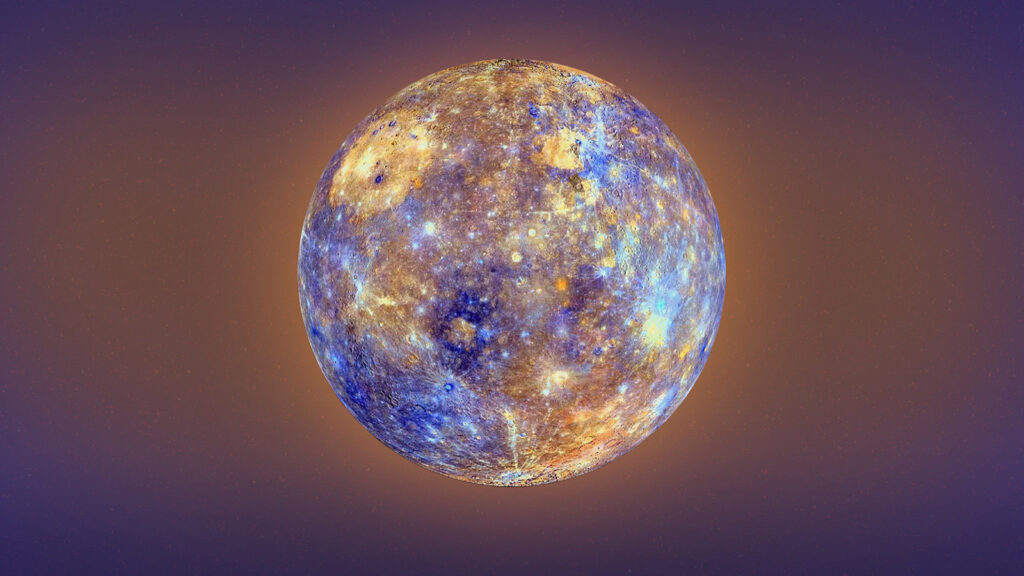
Despite being relatively close to Earth, Mercury is a very mysterious planet that still holds a lot of secrets from us. This is because surprisingly, out of all the planets in the Solar system it is the most difficult to study.
The challenge is that Mercury is too close to the Sun. This means that observing from Earth is hard because at night it can only be seen for a few moments right after sunset or before sunrise. Even though we can’t see it, it can be found during the day, however, observatories are a bit afraid to point their large, expensive, sensitive telescopes at Mercury because it means basically pointing them directly at the Sun, and the brightness can be enough to damage the optical instruments.
Visiting Mercury is no easy task either.
In fact, it takes more energy to send a spacecraft to Mercury than to Jupiter even though it is 4 times closer. How is that possible?
Well, the answer is gravity. Any probe or ship that tries to get into Mercury’s orbit or land on it, needs to adjust against the strong gravitational pull from the Sun, and that requires A LOT of fuel.
Finally, there’s the issue of the heat. Mercury is so hot and reflects so much heat from the Sun that it would melt a lot of the traditional instruments used in spacecrafts. Special shields and technology would have to be developed to be able to land on the surface of the planet.
2) Mercury is the smallest planet in the Solar system
Mercury is the smallest planet in both diameter and mass. It has a diameter of only 4,879 kilometers (3031 miles) which is about 40% smaller than the next planet which is Mars at 6,792 km (4220 miles).
It has a mass of 0.330 x 1024 kg, which is almost half that of Mars which is again next in line with a mass of 0.642 x 1024 kg.
For comparison, Earth has a diameter of 12,756 km and a mass of 5.97 x 1024 kg.
The reason why Mercury is the smallest planet in the solar system is that it is so close to the Sun. As a result, a lot of the material in the area where the planet was being formed was pulled by the star’s gravitational force.
Its small size and proximity to the Sun are also the reasons why Mercury doesn’t have a moon. Its gravitational pull is overwhelmed by the Sun so it would be really hard for the planet to capture a satellite in its orbit.
3) Mercury is the fastest of the planets
Mercury is named after the Roman god of trade, wealth, and travel. The Greeks called him Hermes, and he was also known as the messenger of the gods. He had a pair of winged sandals that allowed him to fly, so he was also associated with speed.
It turns out Mercury’s name is no coincidence, as it is the fastest of the planets in the Solar system.
Mercury travels at 47 kilometers per second (29 miles per second) or 169,200 kilometers per hour.
The speed at which planets move is more or less determined by how close they are to the Sun. This is because the Sun’s gravity is stronger the closer you get to it. Therefore, a planet has to move faster in order to keep a stable orbit around it.
As a result of its high velocity, Mercury makes one trip around the Sun in just 88 days which means it also has the shortest years in the Solar system.
4)Mercury is shrinking

Mercury is the smallest planet in the Solar system. And it will keep on shrinking.
One of the most curious facts about it is that most of the planet is actually just its core. It makes up for 60% of the planet’s mass while its surface is just a thin crust.
For comparison, Earth’s core makes up only 15% of our planet, and Mars’ is about 12%. As a matter of fact, Mercury has the largest core-to-surface ratio of any of the terrestrial (rocky) planets.
And it is very likely that this ratio will become even larger in the future because Mercury is getting smaller.
Even though planets began to form 4.5 billion years ago, they are still not done evolving. Mercury’s core is mostly made out of iron. Extremely hot iron that is still solidifying and cooling. As the core cools off, the whole planet cools off with it too and it contracts. A good way to visualize is to compare it to a dried fruit after the water has been removed. In fact, the surface of the planet develops”wrinkles” like the ones in raisins, except they are large ridges of 10-900 kilometers.
It is hard to predict how small will Mercury become, but we do know that this process will continue. It currently has a diameter of 4,879 kilometers (3031 miles) which is only 30% larger than the Moon.
5) Mercury’s atmosphere is mostly oxygen…and we couldn’t breathe it
Mercury is the planet in the Solar system with the atmosphere that contains the largest percentage of oxygen at 42% approximately. For comparison, Earth’s atmosphere contains only 21% of oxygen.
Unfortunately, we still couldn’t breathe it (assuming that we could somehow find a way to survive in Mercury’s extreme temperatures without protection).
Even though the percentual content of oxygen in the atmosphere is higher, the actual content is much, much less because the atmosphere is so thin.
The atmospheric pressure in Mercury is about 1 nanopascals. The atmospheric pressure on Earth at sea level is 101,325 pascals, or 100,000,000,000,000 times higher. Just so you get an idea of what that means, at the top of mount Everest where most people need to use oxygen tanks to breathe, the atmospheric pressure is still 30,000 pascals. In mercury, your lungs wouldn’t be able to get nearly the necessary amount of oxygen and you would suffocate very quickly.
As you can see from the previous unique characteristics of Mercury, a lot of them have to do with its closeness to the Sun, and its thin atmosphere is no exception.
The reason why Mercury’s atmosphere is so thin is that the solar winds constantly blast it off. This is key because Mercury is also one of the few planets that is constantly replenishing its atmosphere, so if it wasn’t so close to the Sun, who knows what kind of atmosphere it would have?
Learn more about Mercury
Summary
- Mercury has many characteristics that make it unique among all the planets in the Solar system.
- We don’t know as much about Mercury as the other planets because being so close to the Sun makes it hard to study.
- Most of the unique characteristics of Mercury are a result of its proximity to the Sun.
Enjoyed this article?
Get daily 10-minute PDFs about astronomy to read before bed!
Sign up for our upcoming micro-learning service where you will learn something new about space and beyond every day while winding down.

